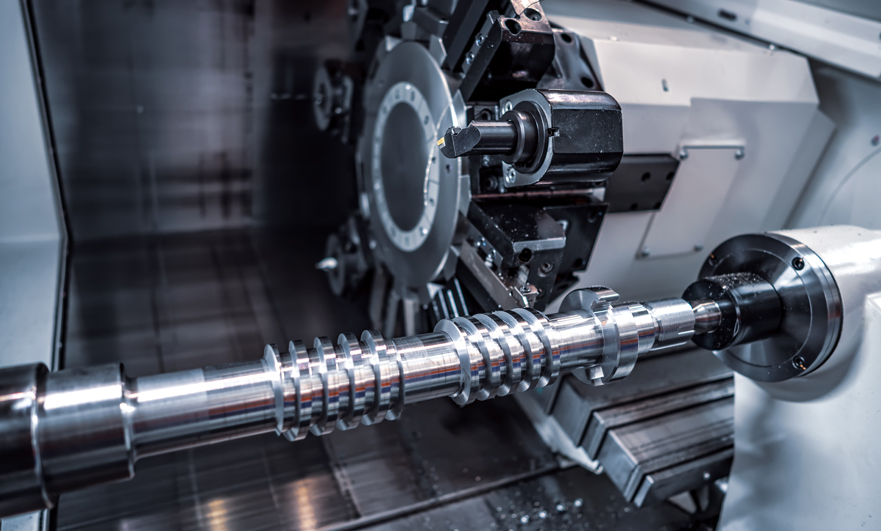15 years one-stop China custom CNC machining parts factory

Hey there I’m VMT Sam!
With 25 years of CNC machining experience we are committed to helping clients overcome 10000 complex part-processing challenges all to contribute to a better life through intelligent manufacturing. Contact us now
 242 |
Published by VMT at Jan 24 2022
242 |
Published by VMT at Jan 24 2022
Bearing CNC machining - Bearings, as an essential and important component in mining machinery products, play an important role in supporting the rotating shaft. According to the different friction properties in the bearing, the bearing is divided into rolling friction bearing (referred to as rolling bearing) and sliding friction bearing (referred to as sliding bearing). The two types of bearings have their own characteristics in structure and advantages and disadvantages in performance. As we all know, bearings are the components that support the mechanical shaft, reduce the coefficient of friction and ensure its accuracy. According to the structure and movement of the bearing, it can be divided into rolling bearing (referred to as rolling bearing) and sliding bearing (referred to as sliding bearing). Since bearings have different characteristics in structure and performance, they should be selected comprehensively.
Structure and movement
The most obvious difference between rolling bearings and plain bearings is rolling bearings. Rolling bearings rotate shafts on rotating supports of rolling elements (balls, cylindrical rollers, tapered rollers). The more rolling elements, the more contact points. Sliding bearings have no rolling elements and rely on smooth contact surfaces to support the rotating shaft. This determines the different movement patterns and friction coefficients of the bearing.
Bearing capacity
Sliding bearings have a larger bearing area, and their impact load bearing capacity is higher than that of rolling bearings. However, bearings with a lubricating film can withstand larger shock loads. When the rotational speed is high, the centrifugal force of the rolling elements in the rolling bearing will increase, which will reduce the bearing capacity of the bearing (high speed is prone to noise). The load carrying capacity of hydrodynamic sliding bearings increases with the increase of rotational speed.
Friction Coefficient and Frictional Resistance
The friction coefficient of rolling bearings is lower than that of sliding bearings and is stable. The friction coefficient of the sliding bearing is unstable under the influence of rotational speed and vibration. Since a stable oil film is not formed, the resistance of the sliding bearing is greater than that of the rolling bearing during starting, and the hydrostatic sliding bearing is an exception.
Definition and advantages and disadvantages of the difference between rolling bearing and sliding bearing
The mechanical operation of rolling bearings means that the friction between the shaft and the shaft seat is a rolling friction bearing, while the sliding bearing is still under the action of sliding friction. The rolling bearing has a clear structure, and the rolling elements are evenly distributed, which can effectively reduce friction. Therefore, the good mechanical starting speed is very fast, and the maintenance is simpler and more convenient. In addition, when the noise is louder, it is more suitable for medium and high speed work and will reduce its service life. In addition, the vibration of the rolling bearing is working. Sliding bearings, by contrast, run smoothly and without noise, but with greater resistance at start-up.

Difference between rolling bearing and plain bearing
The rolling bearing consists of an inner ring, an outer ring, a rolling body, and a cage, of which the outer ring is fixed and supported; the inner ring of the rotating shaft; the rolling body is the most important, the relationship between bearing performance and service life; the cage is an auxiliary work roll, distributed evenly. The sliding bearing is not the above structure, and the material that makes the sliding bearing plays a key role in this regard.
In addition, the main function of the bearing is to reduce the friction force, among which, the size of the friction force of the rolling bearing is related to the level of its manufacturing process and whether it is accurate. The friction force of sliding bearings and their manufacturing related materials is generally discussed in two categories: metal sliding bearings and non-metal sliding bearings (mostly) plastic.
Although rolling bearings and plain bearings belong to mechanical CNC parts, their operation is different. In addition, when using machining, pay attention to the daily maintenance and repair of rolling bearings and sliding bearings.
Rotation Accuracy Comparison
Due to the small radial clearance of rolling bearings, the rotation accuracy is generally high. Incomplete liquid lubricated bearings are in the state of boundary lubrication or mixed lubrication, and the operation is unstable, the wear is serious, and the precision is low. Completely liquid lubricated bearings have high precision due to the presence of oil film, buffering and vibration absorption. The hydrostatic sliding bearing has higher rotation accuracy.
Other aspects of comparison
Rolling bearings use oil, grease or solid lubricant. The dosage is very small, and the dosage is large at high speed. The cleanliness of the oil is required to be high, so it is required to be sealed, but the bearing is easy to replace and generally does not need to repair the journal. For sliding bearings, except for incompletely lubricated bearings, the lubricant is generally liquid or gas, and the amount is large, and the cleanliness of the oil is also very high. The bearing bush needs to be replaced frequently, and sometimes the journal is repaired.
Ready To Start Your Next Project?
Get Instant Quote

Request a Free Quote
Send us a message if you have any questions or request a quote. We will get back to you ASAP!